Related Research Articles
The year 1935 in television involved some significant events. Below is a list of television-related events during 1935.
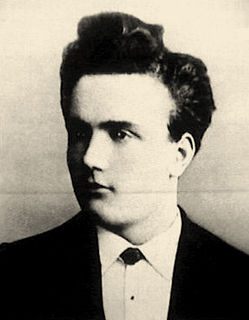
Paul Julius Gottlieb Nipkow was a German technician and inventor. He invented the Nipkow disk, which laid the foundation of television, since his disk was a fundamental component in the first televisions. Hundreds of stations experimented with television broadcasting using his disk in the 1920s and 1930s, until it was superseded by all-electronic systems in the 1940s.

ARD is a joint organisation of Germany's regional public-service broadcasters. It was founded in 1950 in West Germany to represent the common interests of the new, decentralised, post-war broadcasting services – in particular the introduction of a joint television network.

RIAS was a radio and television station in the American Sector of Berlin during the Cold War. It was founded by the US occupational authorities after World War II in 1946 to provide the German population in and around Berlin with news and political reporting.
Television in Germany began in Berlin on 22 March 1935, broadcasting for 90 minutes three times a week. It was home to the first public television station in the world, named Fernsehsender Paul Nipkow. The German television market had approximately 36.5 million television households in 2000, making it the largest television market in Europe. Nowadays, 95% of German households have at least one television receiver. All the main German TV channels are free-to-air.

Norddeutscher Rundfunk is a public radio and television broadcaster, based in Hamburg. In addition to the city-state of Hamburg, NDR broadcasts for the German states of Lower Saxony, Mecklenburg-Vorpommern and Schleswig-Holstein. NDR is a member of the ARD organisation.

The IFA or Internationale Funkausstellung Berlin is one of the oldest industrial exhibitions in Germany. Between 1924 and 1939 it was an annual event, but from 1950 it was held every other year until 2005. Since then it has become an annual event again, held in September. Today it is one of world's leading trade shows for consumer electronics and home appliances.

Sender Freies Berlin was the ARD public radio and television service for West Berlin from 1 June 1954 until 1990 and for Berlin as a whole from German reunification until 30 April 2003. On 1 May 2003 it merged with Ostdeutscher Rundfunk Brandenburg to form Rundfunk Berlin-Brandenburg.

Ostdeutscher Rundfunk Brandenburg, based in Potsdam, was the public broadcaster for the German federal state of Brandenburg from 12 October 1991 until 30 April 2003. It was a member organization of the consortium of public-law broadcasting organizations in Germany, ARD.

Rundfunk der DDR was the collective designation for radio broadcasting organized by the State Broadcasting Committee in the German Democratic Republic (GDR) until German reunification in 1990.
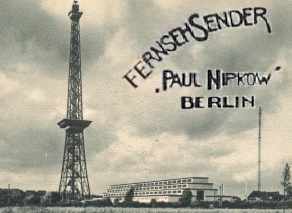
The Fernsehsender "Paul Nipkow" in Berlin, Germany, was the first public television station in the world. Carrying programming from Deutscher Fernseh-Rundfunk, it was on the air from 22 March 1935, until it was shut down in 1944. The station was named after Paul Gottlieb Nipkow, the inventor of the Nipkow disk.

The Haus des Rundfunks, located in the Westend district of Berlin, the capital city of Germany, is the world's oldest self-contained broadcasting centre. Designed by Hans Poelzig in 1929 after he won an architectural competition, the building contains three large centrally located broadcasting spaces, which are shielded from street noise by the surrounding office wings. It is used today by local ARD broadcaster Rundfunk Berlin-Brandenburg (RBB) to make programmes carried by its Inforadio, Kulturradio, and Radio Berlin 88,8 channels. The building's large broadcasting spaces are occasionally also used to host concerts.
The Fernseh AG television company was registered in Berlin on July 3, 1929, by John Logie Baird, Robert Bosch, Zeiss Ikon and D.S. Loewe as partners. John Baird owned Baird Television Ltd. in London, Zeiss Ikon was a camera company in Dresden, D.S. Loewe owned a company in Berlin and Robert Bosch owned a company in Stuttgart. with an initial capital of 100,000 Reichsmark. Fernseh AG did research and manufacturing of television equipment.
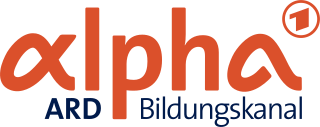
ARD alpha is a German free-to-air television channel run by regional public-service broadcaster Bayerischer Rundfunk. Its programming consists of shows made by Bayerischer Rundfunk, as well as from ARD and Austrian broadcaster ORF. The channel was originally called BR-alpha but was rebranded as ARD-alpha on 29 June 2014.
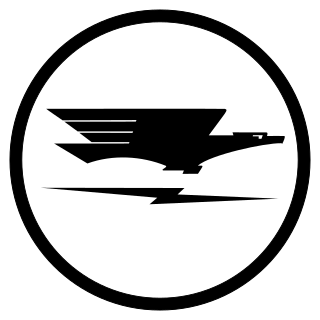
The Reichs-Rundfunk-Gesellschaft was a national network of German regional public radio and television broadcasting companies active from 1925 until 1945. RRG's broadcasts were receivable in all parts of Germany and were used extensively for Nazi propaganda after 1933.
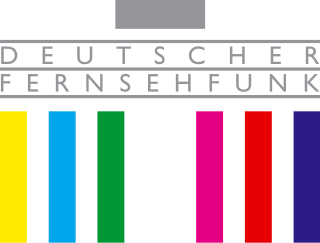
Deutscher Fernsehfunk was the state television broadcaster in the German Democratic Republic from 1952 to 1991.
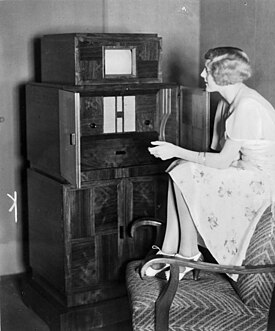
The first regular electronic television service in Germany began in Berlin on March 22, 1935, as Deutscher Fernseh Rundfunk. Broadcasting from the Fernsehsender Paul Nipkow, it used a 180-line system, and was on air for 90 minutes, three times a week. Very few receivers were ever privately owned, and viewers went instead to Fernsehstuben. During the 1936 Summer Olympics, broadcasts, up to eight hours a day, took place in Berlin and Hamburg. The Nazis intended to use television as a medium for their propaganda once the number of television sets was increased, but television was able initially to reach only a small number of viewers, in contrast to radio. Despite many technical improvements to camera technology, allowing for higher resolution imaging, by 1939, and the start of World War II, plans for an expansion of television programming were soon changed in favor of radio. The production of the TV receiver E1, that had just started was cancelled because of the war. Nevertheless, the Berlin station, along with one in occupied Paris, remained on the air for most of World War II. A special magazine called Fernsehen und Tonfilm was published.

FilmFernsehFonds Bayern is a company whose goal is to promote media in Bavaria, Germany. The fund has its headquarters in Munich.
The first scheduled, high-definition television programmes were broadcast on 2 November 1936 by the British Broadcasting Corporation. They had been preceded by a number of low-definition BBC test broadcasts, as well as a 180-line Deutscher Fernseh Rundfunk service, from Berlin, since March 1935.

And Tomorrow the Entire World is a 2020 German-French political drama film directed by Julia von Heinz. It premiered in competition at the 77th Venice International Film Festival. It was selected as the German entry for the Best International Feature Film at the 93rd Academy Awards, but it was not nominated. The title of the film is taken from the line "Today Germany belongs to us, and tomorrow the whole world" from the National Socialist propaganda song "The Rotten Bones Tremble".
References
- ↑ Old Time Radio: Programm "Deutscher Fernseh-Rundfunk"